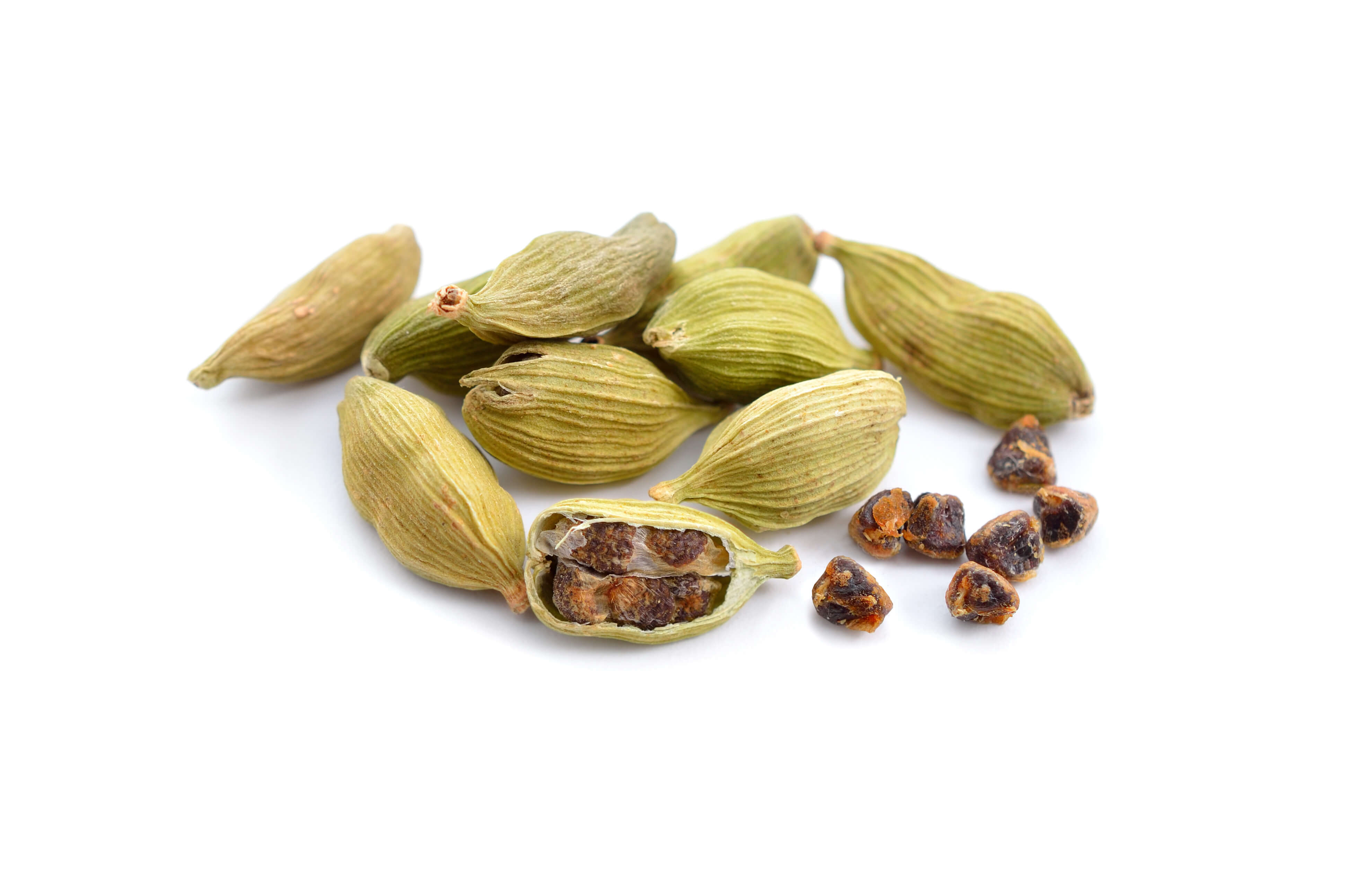Cardamom EO
Naturelle
Spicy > Cool Spices > Terpenic > Agrestic

Crédits photo: ScenTree SAS
Latin name :
Elettaria cardamomum (L) Maton
Botanical profile :
Cardamom comes from various species of the Zingiberaceae family and the genus Elettaria.
Geographic origin :
Originally from South East Asia, cardamom is produced in India (historical producer), Guatemala (main producer by volume - Approx. 90% of the market), Sri Lanka, Thailand, Laos, Vietnam and Cambodia
Chemotypes :
There are two main varieties of Elettaria cardamomum:
Elettaria cardamomum var major.
Elettaria cardamomum var minor.
These varieties are mainly distinguished by the size of their fruits. However, these two varieties are interfertile, therefore, time and conditions of culture allowed the multiplication of cardamom varieties (to the detriment of fruit production yield).
The name ''cardamom '' is also attributed to many varieties of the genus Amomum, although this appellation is not correct from a botanical point of view.
Guatemalan cardamom is more minty and peppery while the Sri Lanka cardamom is more citral-citronella.
Elettaria cardamomum var major.
Elettaria cardamomum var minor.
These varieties are mainly distinguished by the size of their fruits. However, these two varieties are interfertile, therefore, time and conditions of culture allowed the multiplication of cardamom varieties (to the detriment of fruit production yield).
The name ''cardamom '' is also attributed to many varieties of the genus Amomum, although this appellation is not correct from a botanical point of view.
Guatemalan cardamom is more minty and peppery while the Sri Lanka cardamom is more citral-citronella.
Extraction process :
Cardamom is an herbaceous plant with rhizomes. It is cultivated between 600 and 1200m of altitude and generally prefers temperate climates. The plantation is made in July for a harvest in winter, at the beginning of spring, when the capsules are very green and the fruits are black. The harvest is done manually before letting the capsules dry. This drying stage is complex because it allows the development of several aromatic compounds, but it also allows the evaporation of some of the most volatile compounds. It is therefore necessary to be very careful.
Once dried the capsules are husked to preserve only the seeds. These are then crushed to facilitate the various processes leading to the different by-products obtained from cardamom.
In perfumery it is possible to obtain several types of product: a Cardamom EO; a Cardamom Absolute; an Cardamom oleoresin as well as a Cardamom CO2 extract.
Cardamom EO, is carried out by hydrodistillation (during approx. 6 hours) of the crushed seeds. Yields between 8 and 10% depending on the varieties used. It should be noted that the longer the distillation process, the higher the level of Eucalyptol and, in reverse, the lower is the level of Terpenyl Acetate.
The other types of extraction are explained in the corresponding ingredients page.
Once dried the capsules are husked to preserve only the seeds. These are then crushed to facilitate the various processes leading to the different by-products obtained from cardamom.
In perfumery it is possible to obtain several types of product: a Cardamom EO; a Cardamom Absolute; an Cardamom oleoresin as well as a Cardamom CO2 extract.
Cardamom EO, is carried out by hydrodistillation (during approx. 6 hours) of the crushed seeds. Yields between 8 and 10% depending on the varieties used. It should be noted that the longer the distillation process, the higher the level of Eucalyptol and, in reverse, the lower is the level of Terpenyl Acetate.
The other types of extraction are explained in the corresponding ingredients page.
Major Components :
Eucalyptol (35-40%)
Terpinyl Acetate (20-25%)
Alpha-Pinene (≈6%)
Linalool (≈6%)
Sabinene (≈4%)
A supercritical CO2 extraction interchanges the two majoritary components proportions.
Terpinyl Acetate (20-25%)
Alpha-Pinene (≈6%)
Linalool (≈6%)
Sabinene (≈4%)
A supercritical CO2 extraction interchanges the two majoritary components proportions.
- Uses in perfumery :
- Useful in spicy, warm and zesty accords.
- Other comments :
- Cardamom is a spice used since ancient times by Indians and Arab people. Many ancient writings relate the presence of this spice in cooking recipes and in ancient religious rites. Cardamom is on the podium of the most expensive spices in the world, after saffron and vanilla.
Its export from Guatemala is the largest source of agricultural exports in the country, especially since in the early 2000s, this country was producing about 90% of the world market.
A possible adulteration with Terpinyl Acetate can be made as it is the marker compound for the quality of the EO, with the Eucalyptol. Adulteration can also be done with Amomum fruits introduced before the extraction.
In 2018, floods in India caused the loss of part of the crop, contributing to the increase in the price of the essential oil. - Volatility :
- Head/Heart
- Appearance :
- Green liquid
- Stability :
- Solubility issues in perfumes
The esters identified in this raw material can form their corresponding acid in stability tests
The terpenes identified in this raw material can polymerize when they are oxidized - Price Range :
- €€€€
- Aromatherapy :
Informations provided below are taken from reference works in aromatherapy. They are given for information purposes only and can not constitute medical information, nor engage the responsibility of ScenTree.
Cardamom has carminative (allows the evacuation of intestinal gases) and expectorant (coughing) virtues. It is recommended in case of spasmodic colitis (irritation of the colon) and catarrhal bronchitis.

Crédits photo: ScenTree SAS
- EINECS number :
- 96507-91-4
- FEMA number :
- 2241
- Allergens :
- Linalool - D-Limonene
- IFRA :
- This ingredient is not restricted
To learn more about IFRA's standards : https://ifrafragrance.org/safe-use/library
ScenTree is solely responsible for the information provided here.




